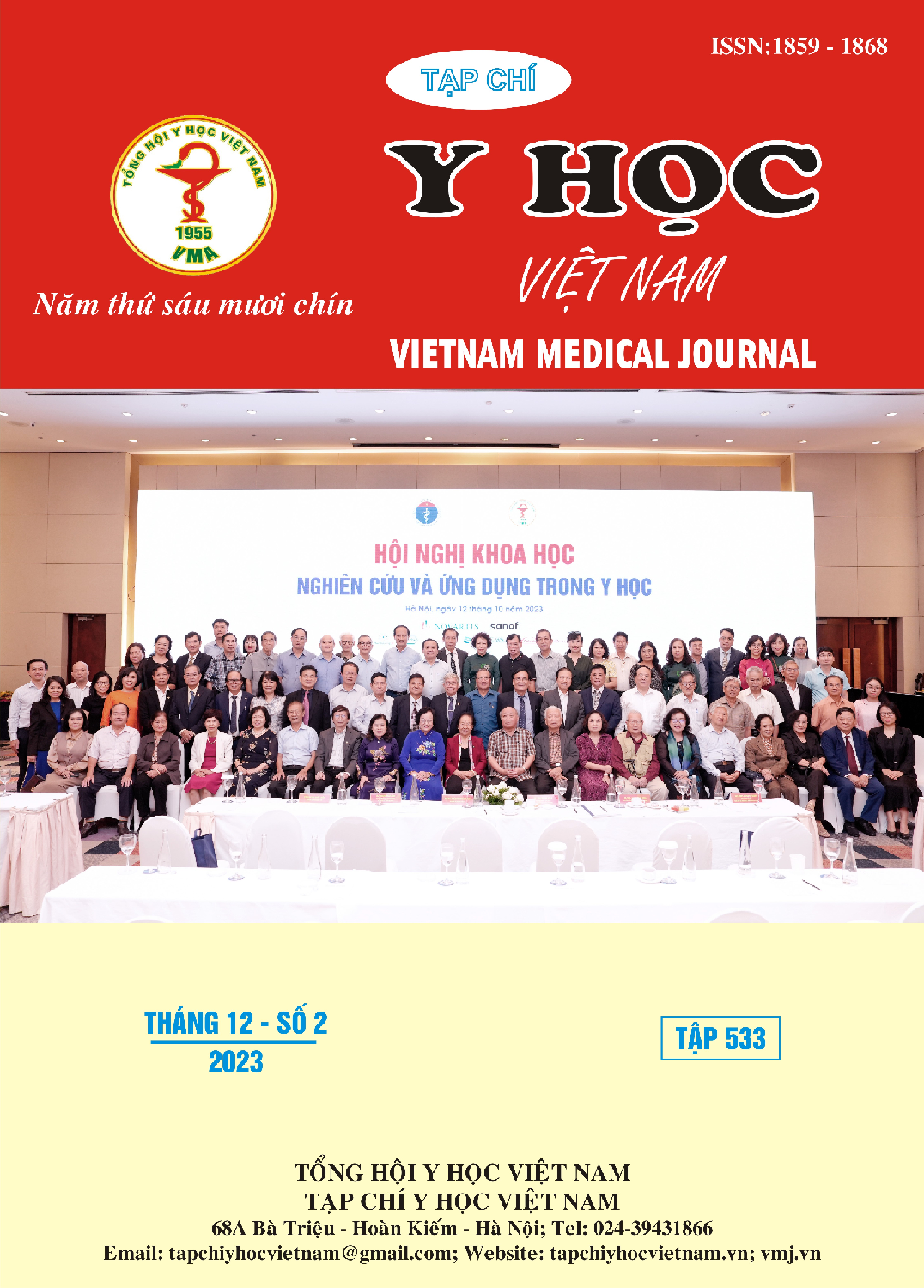EVALUATING OF THE CORRELATION BETWEEN STONE RECURRENCE RATE AND BILIARY STENOSIS IN PATIENTS TREADED INTRAHEPATIC AND EXTRAHEPATIC LITHIASIS BY PERCUTAEOUS TRANSHEPATIC CHOLANGIOSCOPY LITHOTRIPSY
Main Article Content
Abstract
Purpose: to evaluating the correlation between stone recurrence rate and biliary stenosis in patients with intrahepatic and extrahepatic stones, treated by percutaneous transhepatic cholangioscopy lithotripsy. Subjects and methods: a retrospective study in 59 patients having intrahepatic and extrahepatic lithiasis, treated by using percutaneous transhepatic cholangioscopy lithotripsy from January 2020 to August 2022 at Radiology Center – Hanoi Medical University Hospital. Results:. The study included 59 patients with intrahepatic and/or extrahepatic stones who had undergone percutaneous laser lithotripsy, were divided into two groups with biliary stenosis ( 61%, 36 patients) and without biliary stenosis (39%, 23 patients). The median time follow-up was 26,7 months (IQR 3-37), stone recurrence rater were 66,1% (39 patients). The research shows that there is an association between biliary stenosis and stone recurrence rate (p=0,002). We found that biliary stenosis from 45,1% has a predictive value for the possibility of biliary stone recurrence with a sensitivity of 86% and a specificity of 66,7%. Thus, percutaneous laser biliary lithotripsy is most effective in patients without biliary stenosis with a long-term stone recurrence-free rate in 56,5% of patients compared to 22,2% of patients with biliary stenosis. Conclusion: Biliary stenosis is a risk factor of stone recurrence and biliary stenosis has the ability to predict the rate of biliary stone recurrence in patients after percutaneous transhepatic cholangioscopy lithotripsy. Therefore, assessing the biliary stricture is necessary to predict long-term effectiveness and devise a treatment plan to reduce the recurrence rate.
Article Details
References
2. Khôi, L.N. Đánh giá kết quả điều trị sỏi trong gan bằng phẫu thuật nối mật - da với đoạn ruột biệt lập và nối mật - ruột - da. Gan -- Phẫu thuật. 2015:138.
3. Cường, L.V. Thành phần hóa học của 110 mẫu sỏi mật ở người Việt Nam phân tích bằng quang phổ hồng ngoại và raman. Kỷ yếu công trình nghiên cứu khoa học. 1999.
4. Tyson GL, El-Serag HB. Risk factors for cholangiocarcinoma. Hepatol Baltim Md. 2011; 54(1): 173-184. doi:10.1002/hep.24351
5. Lee SK, Seo DW, Myung SJ, et al. Percutaneous transhepatic cholangioscopic treatment for hepatolithiasis: an evaluation of long-term results and risk factors for recurrence. Gastrointest Endosc. 2001;53(3):318-323. doi: 10.1016/ s0016-5107(01)70405-1
6. Novacek G. Gender and gallstone disease. Wien Med Wochenschr 1946. 2006;156(19-20):527-533. doi:10.1007/s10354-006-0346-x
7. Kaufman HS, Magnuson TH, Lillemoe KD, Frasca P, Pitt HA. The role of bacteria in gallbladder and common duct stone formation. Ann Surg. 1989;209(5):584-592.
8. Huang ZQ, Huang XQ. Evolution of surgical treatment of intrahepatic lithiasis in China. World J Gastroenterol. 1997;3(3):131-133. doi:10.3748/ wjg.v3.i3.131
9. Cappelli A, Mosconi C, Cucchetti A, et al. Outcomes following percutaneous treatment of biliary stones. HPB. 2019;21(8):1057-1063. doi: 10.1016 / j.hpb.2018.12.007
10. Hong KS, Noh KT, Min SK, Lee HK. Selection of surgical treatment types for intrahepatic duct stones. Korean J Hepato-Biliary-Pancreat Surg. 2011;15(3): 139-145. doi: 10.14701/ kjhbps.2011.15.3.139


